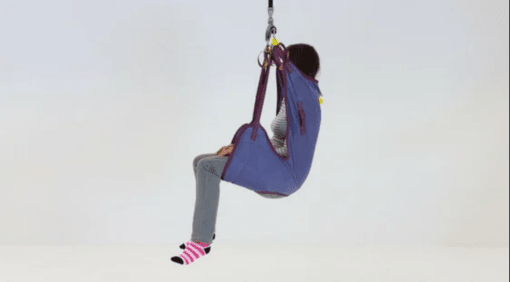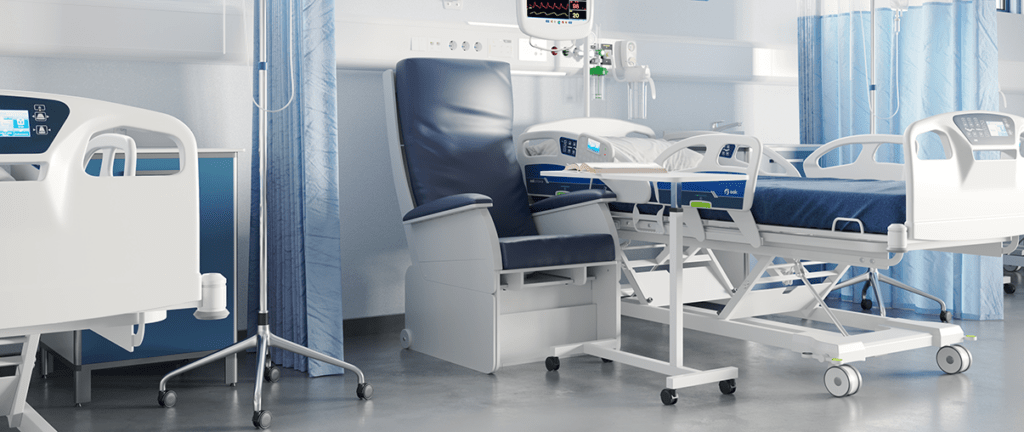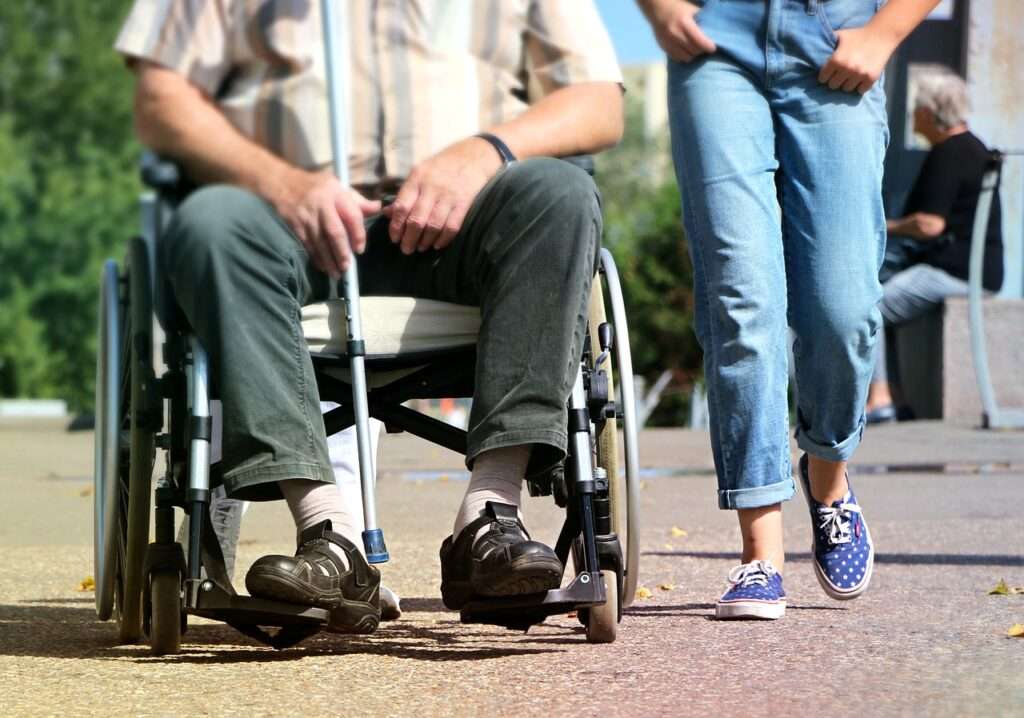Moving and handling specialists will always emphasise the importance of knowing how to apply a lifting/hoist sling to a patient. Whether it’s when they are in bed or sitting in a chair, you should always know the correct procedures to put a sling on someone to ensure that they are being lifted in the safest way possible.
We’ve put this guide together to help you refresh your knowledge on the best way to fit a sling to someone laid down and someone sat in a chair.
Applying a hoisting sling to someone in bed
Step 1: Gently roll the individual on to their side, ensuring that their knees are slightly bent to stop them from rolling further.
Step 2: Roll up half of the sling lengthways, with the label on the inside. Place it behind the individual on the bed, and make sure the bottom of the sling is just behind the knees.
Step 3: With the half-rolled sling in the correct position, gently roll the individual back over to the other side so that they are on the laid-out part of the sling. Unroll the rest of the sling so that it is completely flat on the bed.
Step 4: Carefully roll the individual on to their back, placing their hands by their sides in doing so. Make sure that the leg pieces are correctly positioned underneath the legs, and ensure that the shoulders are in the right place.
Step 5: Attach the shoulder straps and the modesty loop to the appropriate spreader bar, and make sure that the individual has good head support if needed.
Applying a hoisting sling to someone in a chair
Step 1: Gently shuffle the sling down behind the individual until the leg extensions are down at the bottom of the chair.
Step 2: Pull the leg extensions down to the same level as the hips (or a little lower) and pull each side down along the side of the legs and then under the legs.
Step 3: If it isn’t already, make sure the sling is sitting across the back and shoulders of the person to support them. At this point, the leg loops (the longer ones) should be between the person’s legs and the shoulder loops (the shorter ones) will be next to or just in front of the shoulder.
Step 4: Attach the shoulder and legs loops to the appropriate spreader bar, and double check that the sling is in the right place to support the user’s body. Provide additional head support if necessary.
Summary
These are two of the easiest ways you can get a someone in a hoist sling, but there are other methods that are taught and practised. If you can think of any other scenarios where you need to apply a lifting sling, then let us know in the comments below and we can take a look at those too!














